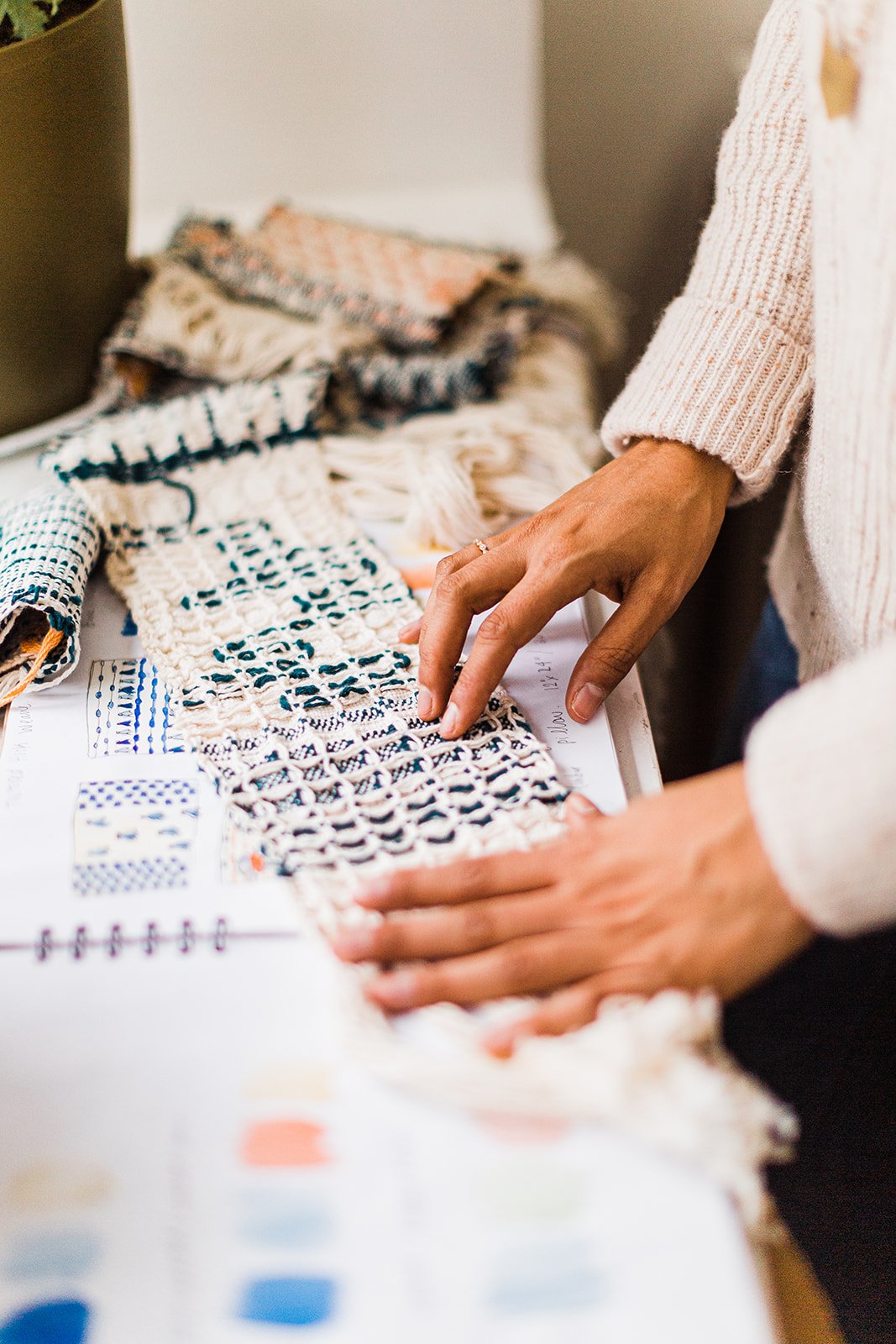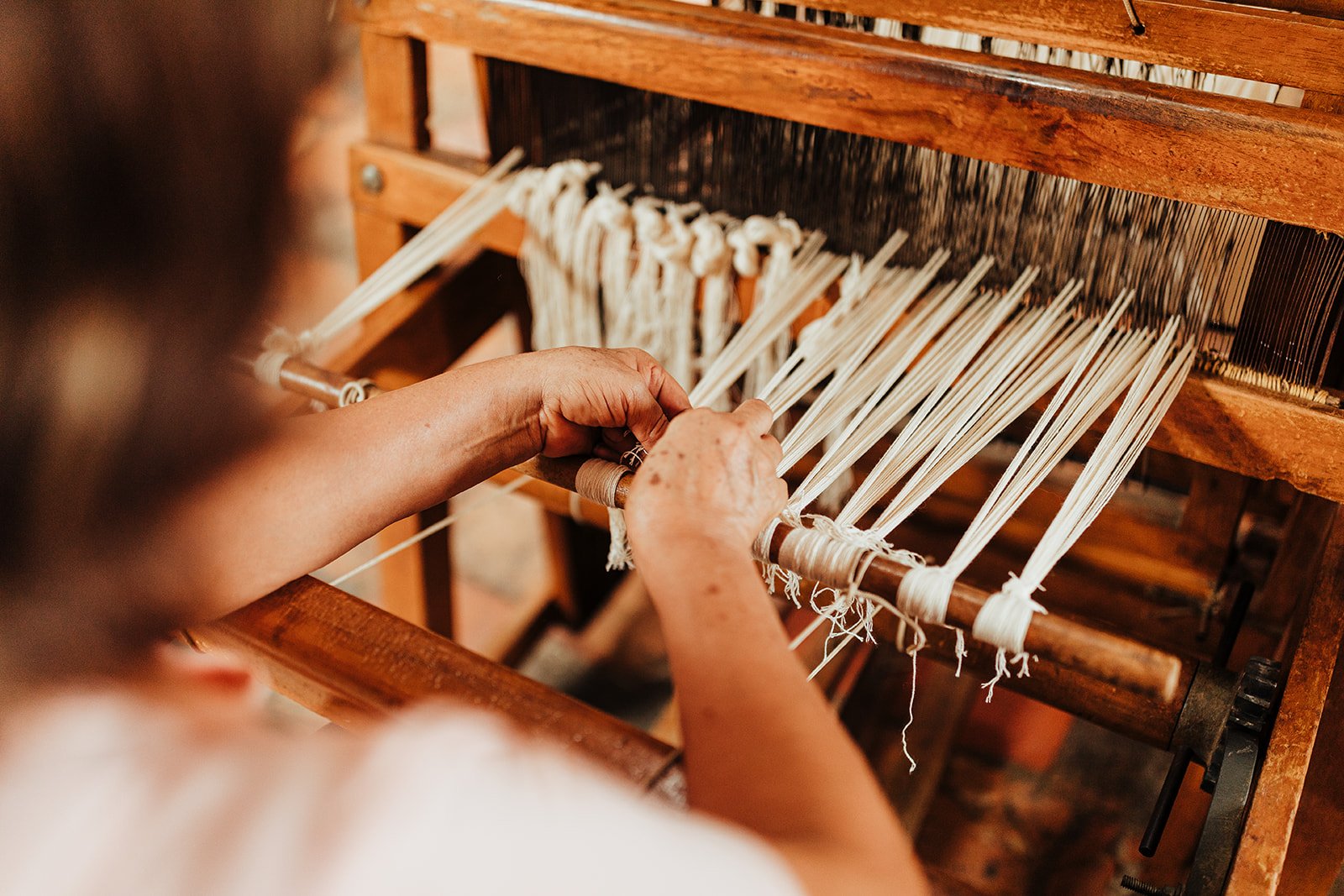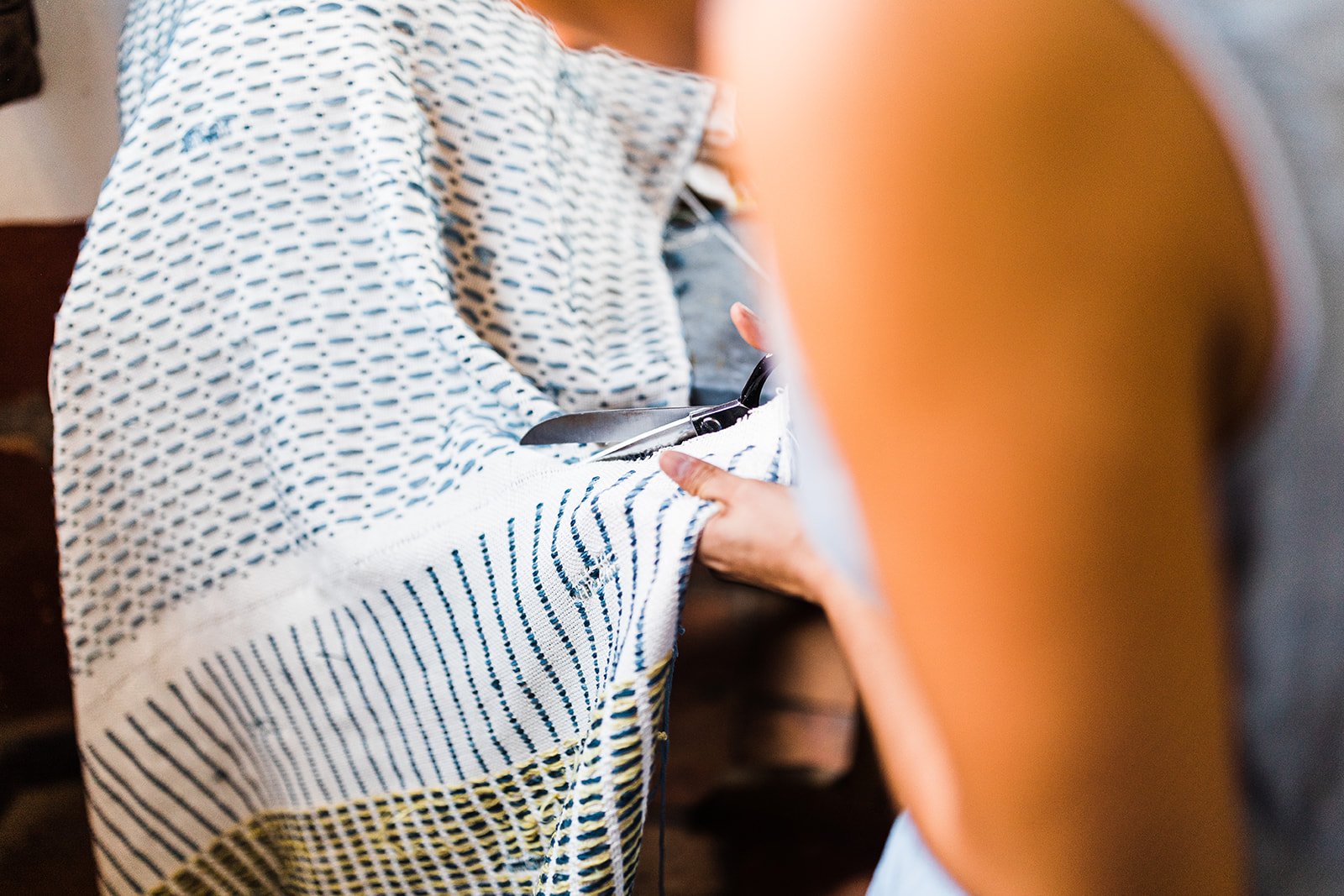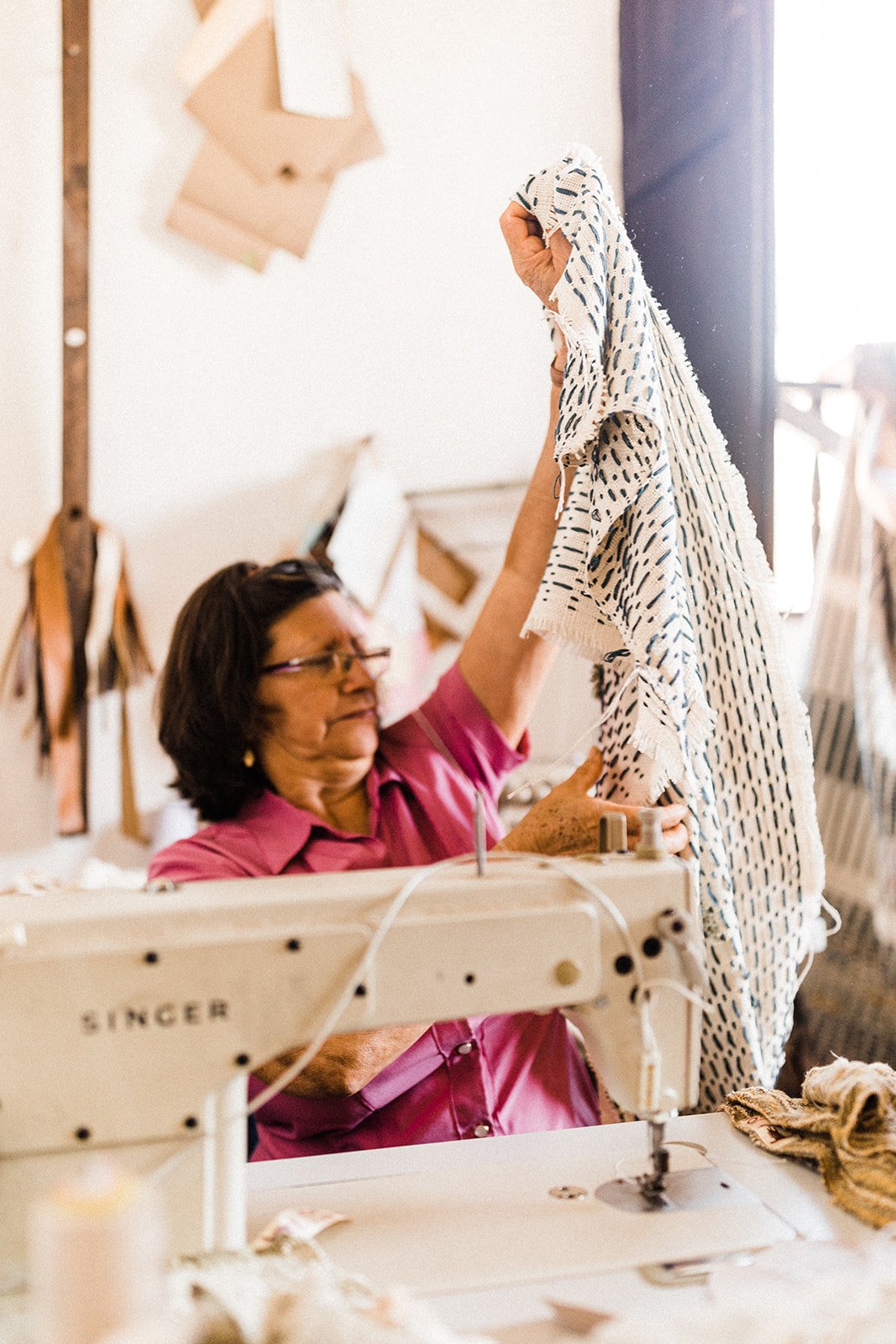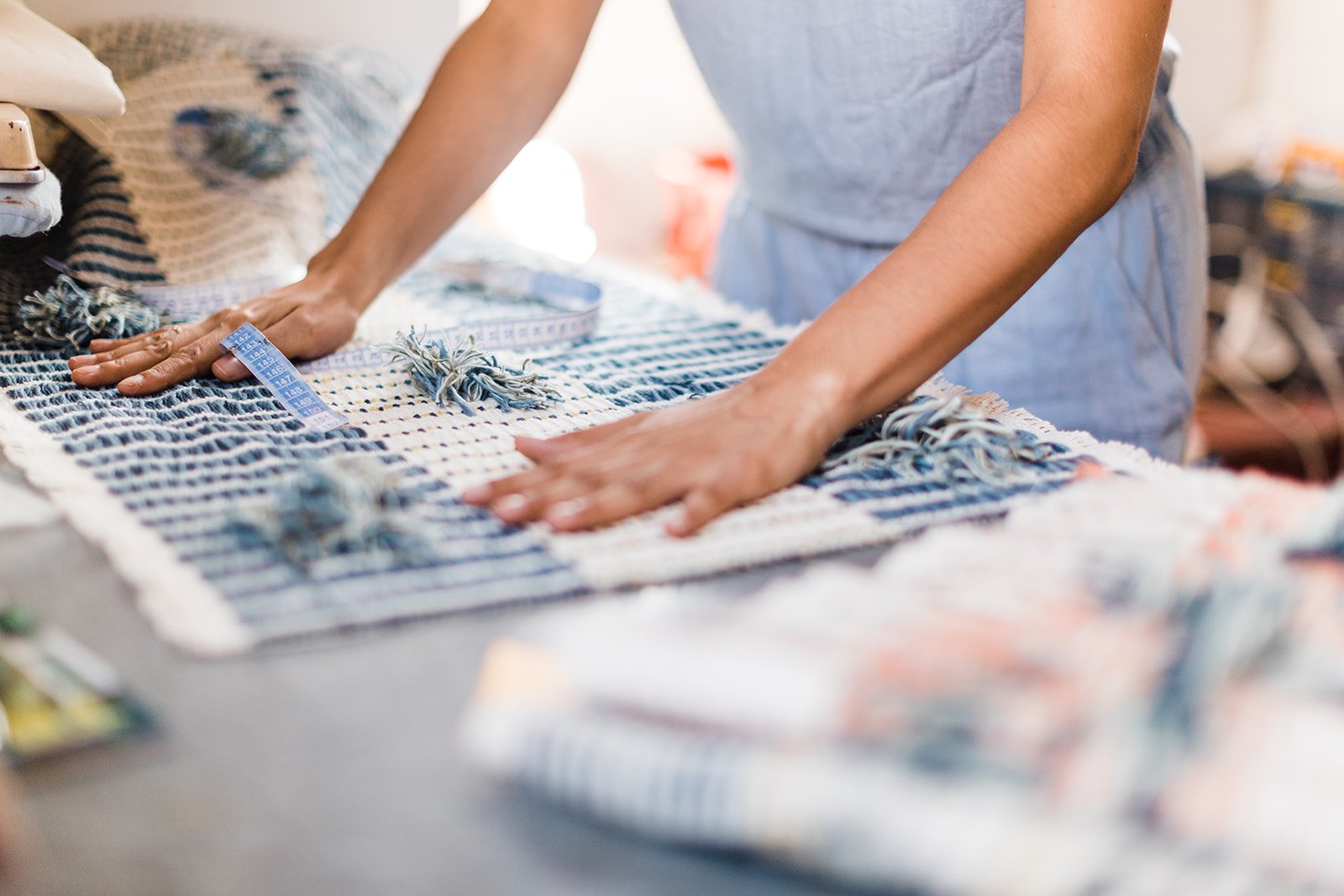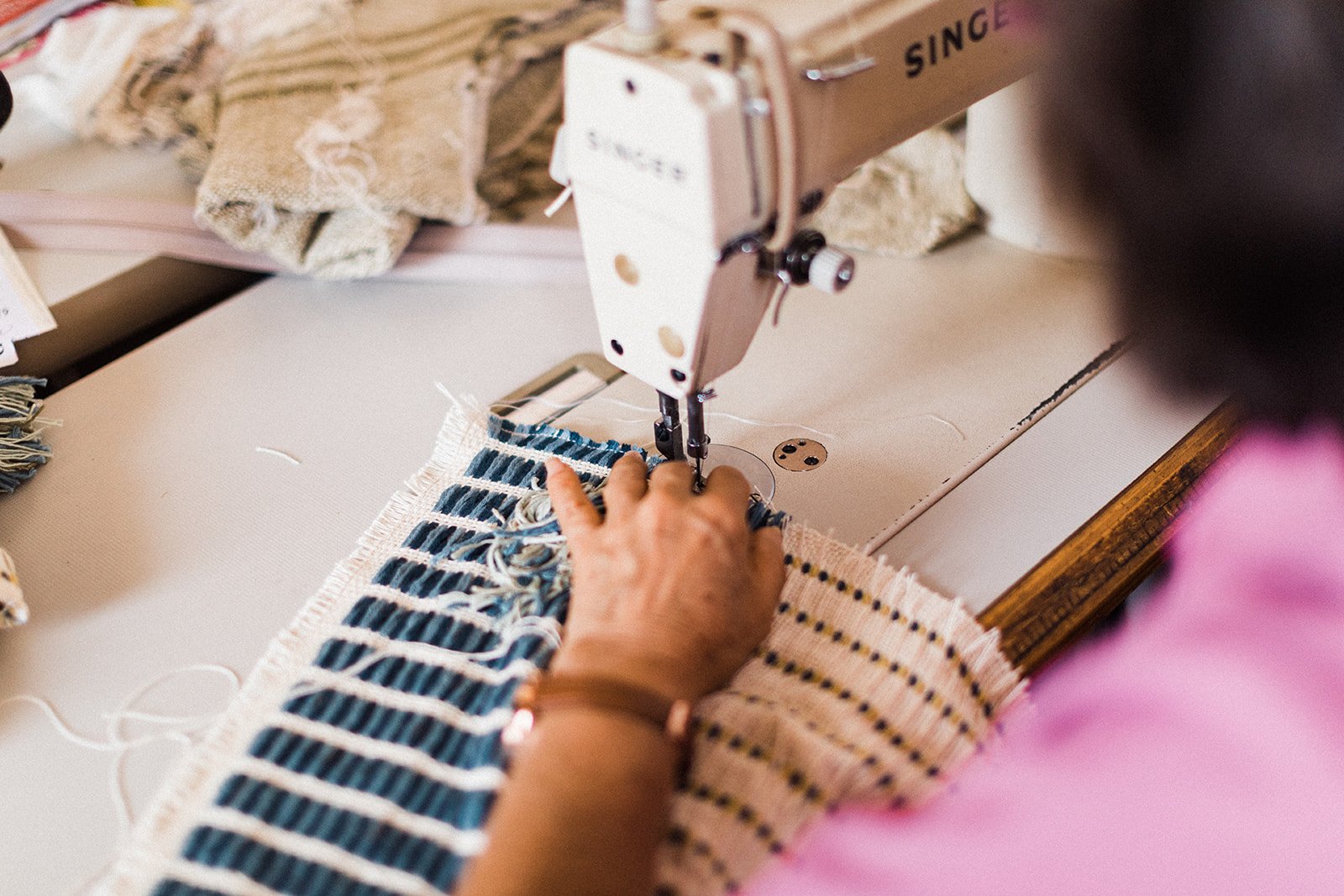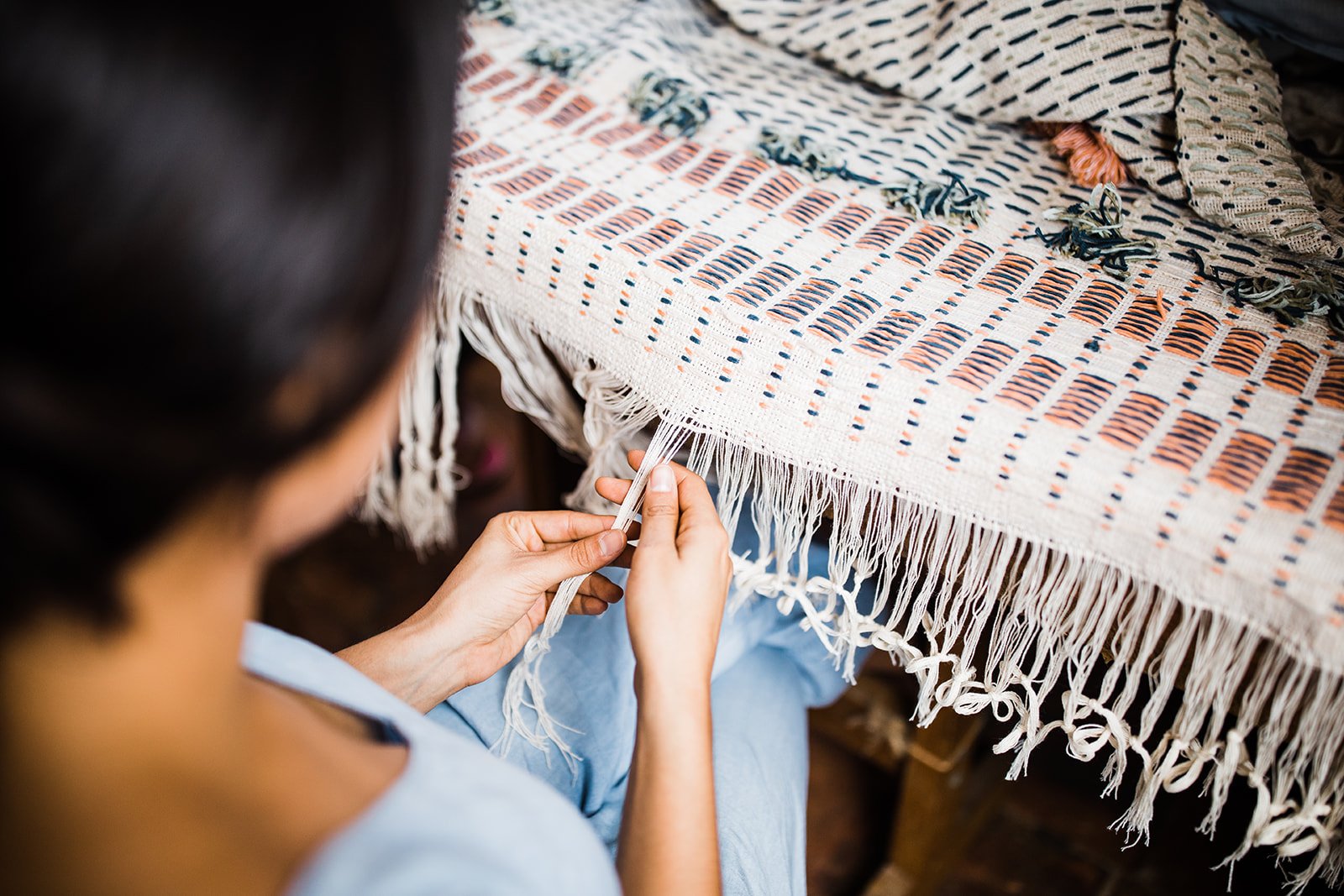Sample Sales Help Small Businesses Be Sustainable
The term sample sale is commonly used to describe an event when a brand or large retailer (often in the fashion industry) offers select inventory at a discounted price. For consumers, it might mean getting your hands on your favorite designer’s piece at a lesser or affordable price. But why does this happen? Why do companies have to discount these items in near perfect or completely perfect condition? We hope to answer these questions and also provide insight into why smaller brands like ours also participate in our own versions of sample sales to be more circular, less-wasteful, and better at designing out waste as a whole.
The story of waste in the textile industry
Before we can talk more about samples, we have to talk about waste first. Waste is part of any form of process. It is the material, substance or bi-product of any process of production. In the textile or fashion industry, “waste” is always the unwanted material that is discarded after the process of manufacturing a fabric or a garment. Everything that was used in order to produce that piece of cloth that is no longer of value or use is considered waste. If we think about the manufacturing process that way, and consider all of the resources used to make new clothes or fabrics, then the result of a basic list of waste will always include but is not limited to:
Water
Water is essential for production. Water is needed to grow cotton crops for many months before the fiber is collected. Water is needed in the dyeing process. Water is needed in the washing and finish process of a fabric. We consider water as “waste” when that resource can no longer be used and it has be discarded. Often in the production process of conventional textile manufacturing, water is polluted with chemicals that make it harmful for that same water to be used again and therefore needs to be wasted. There are specific protocols to discard the polluted water so that it does not get into drinking water and homes. Sadly, we are aware there are many times that these protocols are not followed and regulated, therefore toxic for rivers, land, and communities. In our case, along with brands that practice natural dye and eco-friendly methods, we [only] use natural dyes, non-toxic mordants and detergents to avoid as much as we can. Yes, this still contaminates water, but it can go back safely into the environment.
Energy
Huge amounts of energy are needed in every part of the production process specially in larger textile factories where all machines are operated by energy. The machines that weave fabric need electricity. The dyeing process, the washing, the drying and the sewing processes all need energy to work. Thankfully in our small artisanal workshop we see less amounts of energy used since our process is more handmade. We need electricity to have light in our workshop, to use the washing machine and for our sewing machine. However, energy is wasted because it has been used and cannot be reused.
Materials
Garments or textiles made completely out of natural fibers can decompose safely into soil. Unfortunately, majority of clothes and home textiles are made using polyester fibers which cannot decompose easily. Synthetic materials have become a HUGE contributor to waste and environmental pollution. Whether it be natural or synthetic, these materials are needed to make new textiles. Materials like cotton, zippers, thread, and anything else that is needed in the manufacturing process to achieve that final product. After the production process, any leftover material is considered waste if it is not reused or repurposed.
Why should we care about waste?
Waste is a concern for companies and households. We are all responsible and each play a part in reducing the negative impact we are causing as a society over the earth. Material waste at home is known as household waste and it can vary from single plastic containers to clothes and other materials that are thrown into the landfill and generally are not recycled or reused. A family looking to reduce the amount of waste could start by eliminating single plastic items from their homes, reusing cardboards and boxes for storage uses, separating the organic waste and using it as compost for their gardens. These are just some examples. In our case, we think of our small business as a part of our household, and we make the effort to reduce our material waste whenever possible.
We believe becoming more sustainable is not an easy task and it requires tackling many layers to truly become a zero-waste company in all its meaning. We are conscious to use only the materials we need for production. We save all of our production scraps, and as mentioned earlier use raw materials and natural dyes that can safely go back in the earth, if needed. There is so much more we want to do to be a more sustainable business. For now, our first step is to reduce material waste from our entire production process. One way to support us in this effort is to have a sample sale.
What are samples?
We want to definie and explain what is considered a sample in our business. When making a new product there are many steps before the beautifully packaged and ironed throws, pillows, and baskets arrive at our front doors. In our business we think of fabric swatches and fully finished products as samples because these items were created with the sole purpose of helping us create our final pieces. They are like the first drafts of the final product. These drafts then become samples, unfinished or finished products that don’t make it into the collection, and therefore could sit at our workshops for months and sometimes years.
THE FIRST SAMPLES
A new weave can take us up to 4 months to design and trial before we actually go into production. Think of it as a writer who uses many pages to jot down their ideas, notes, and to draft their novels before they are satisfied with the end result. They need to pen down all of those words even if the paper itself is going to end up on their floors piling up. They might come back to it for reference, feedback, or new inspiration. Similarly, in our workshop we need to make smaller pieces of fabric to try out new ideas of colors, softness, and weave structure in order to arrive to new designs we feel happy with. This process creates waste. Smaller pieces of fabric that don’t end up becoming part of the final product.
THE FIRST PRODUCTION ROUND
Once we are happy with our fabric samples we go into our first round of production. This means we weave larger amounts of fabric in order to sew into new products. In this stage generally all samples end up becoming final products. However, since it’s the first time making these designs there is more chance of error. For example, a weave that was tested into 5”x5” sample squares now needs to be made into 20”x20” pillows. This means we need to alter our small samples to fit this larger design and it might not come out as expected or as wanted the first time around. Another example is yarn shrinkage. Yarn shrinks when woven and washed but it never shrinks exactly the same. This means we have to calculate material for yarn to shrink but when it does not shrink as expected there can be wasted sections of fabric once it needs to be sewn into a specific sized pillow case. Overall, the first production round of a new collection is generally expected to create pieces that are not the size one was looking for, the weave did not come out as expected, or simply the new design did not make it into the final collection.
HUMAN ERROR & HAPPY MISTAKES
Lastly, after we have chosen the products that will be part of a in new collection, we can start making these items in larger quantities for our web store or for a wholesale client, but there are always mistakes that happen. This is called human-error. We do not see this part of our business as an error necessarily but as human. Unfortunately, we still find ourselves competing with machine-made items. Industrially-made items can never be compared, nor shouldn’t be compared to hand-made, but our consumerist culture has taught us to expect machine-made quality. This is where our education and content matters a whole deal. We want to communicate that each part of the process at Zuahaza was carefully handled by human hands. We believe our products are high quality and beautifully made but they will never be exactly a replica from a photo; or that colors will be the same brightness and shade every time; or that there won’t be small imperfections in the texture of the fabric. All of these small differences from product to product are bound to happen and we communicate that in each product description. However, sometimes there are products that can be mistakenly made larger, the yarn used was the wrong color, the weaving was too loose or too tight, etc. In this case when these differences are too clear we also decide that these items will become samples and they join the rest of the samples in the workshop pile.
How sample sales can help our business become more sustainable
Now that we have shared which products at Zuahaza can be categorized as samples, we want to share why we think sample sales are an excellent way for our business to become more sustainable economically and environmentally:
AN Easy way to repurpose and reuse products in good conditions
Many of these samples are actual products that are in very good conditions but are visibly too different enough from the expected product to sell with the same group of items in the shop. We consider these items one-of-a-kind because they were happy accidents that will not be replicated. Instead of discarding them and avoiding waste, we think of them as unique and sell the item at a special price with the hope that a home will appreciate it as much as we do.
HELPS CREATE ECONOMIC SUSTAINABILITY FOR SMALL BUSINESSES
Product-based businesses need a lot of capital to make the product let alone sell it. There is a huge investment that needs to be made by the business in order to purchase the materials and pay for the labor needed to make that product. This is a big financial risk the brand is taking upfront. If there are piles of products sitting at the workshop, that is money wasted instead of being properly used. Reusing samples is a great example of a simple way a small business could be using their resources more responsibly and mindfully in order to achieve financial stability.
sustainability is a journey, not a destination
Sustainability, zero-waste and circular design are words that have been widely used across industries and many times misused for marketing purposes. We want to be transparent about this: We have not arrived at a full sustainable production process and that might also be unachievable. For us, what that means is that becoming more sustainable is a process, a day to day choice. There is no way of becoming 100% sustainable in all aspects of business and you should be mindful of businesses that tell you that they are. We believe in a journey of sustainability. Taking one step at a time to do things better. For us, eliminating waste that happens in our production cycle is the first step but definitely not the last.
Now, without further ado we invite you to shop our first sample sale full of one-of-a-kind items, beautifully handcrafted at special prices not because we think of them as lesser but because they are unique and won’t be available again after they are gone.




